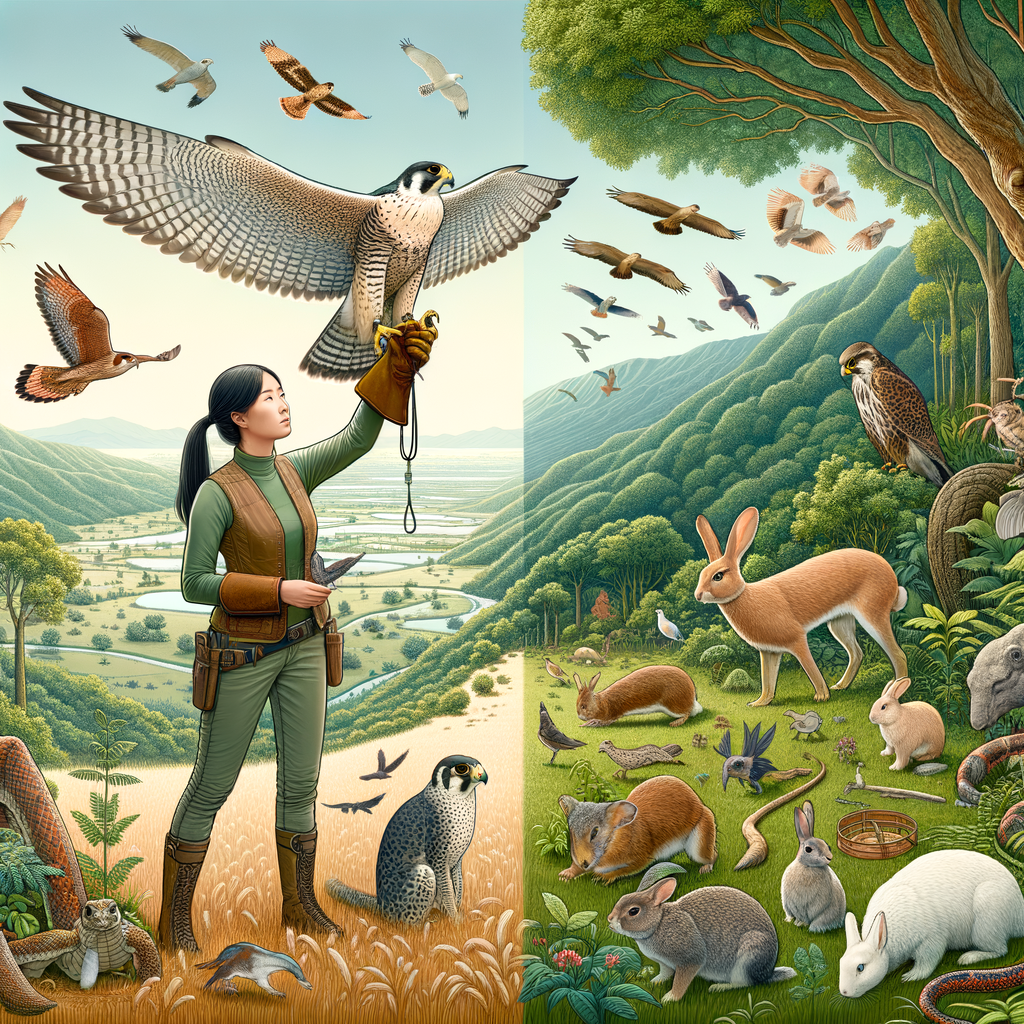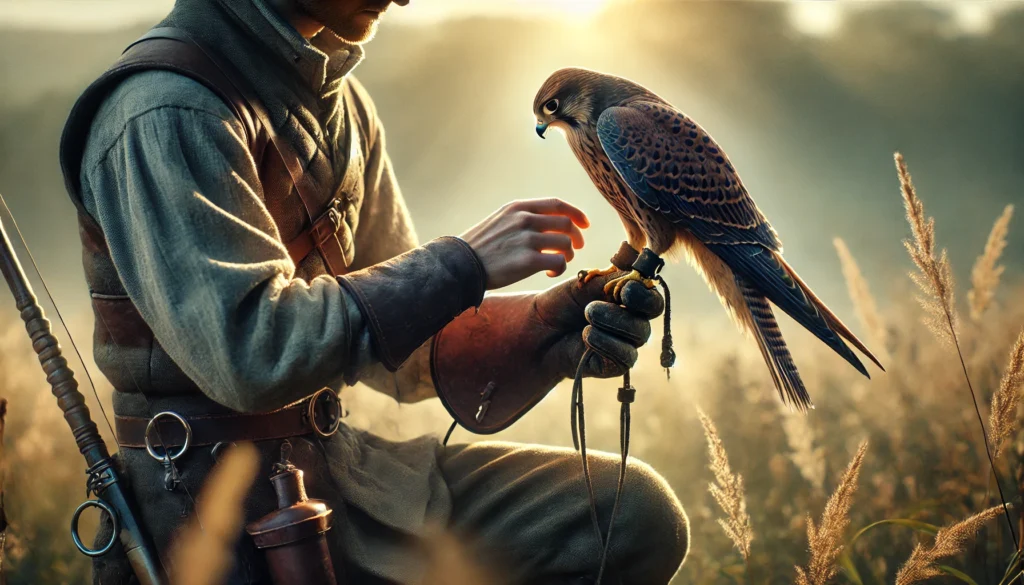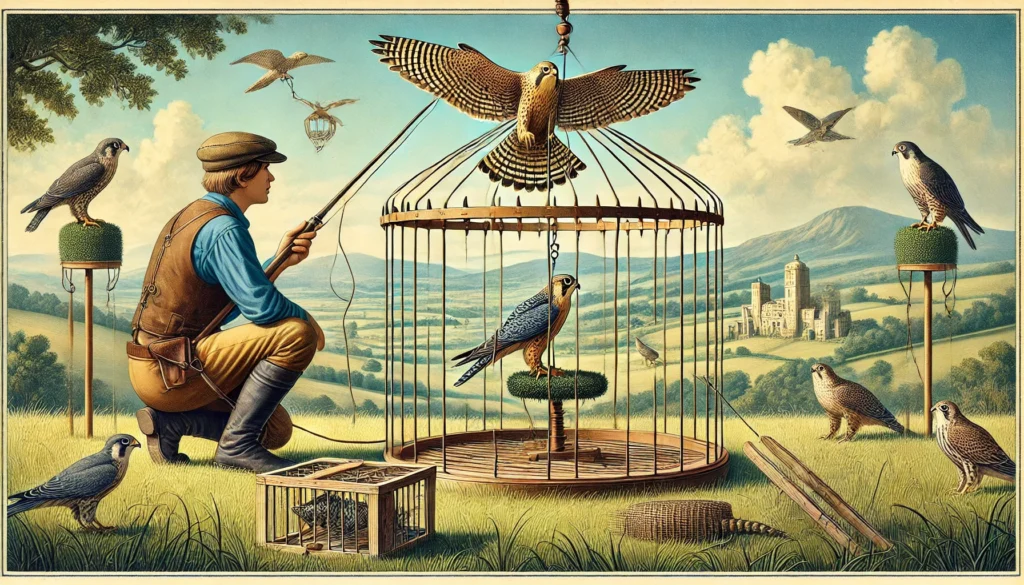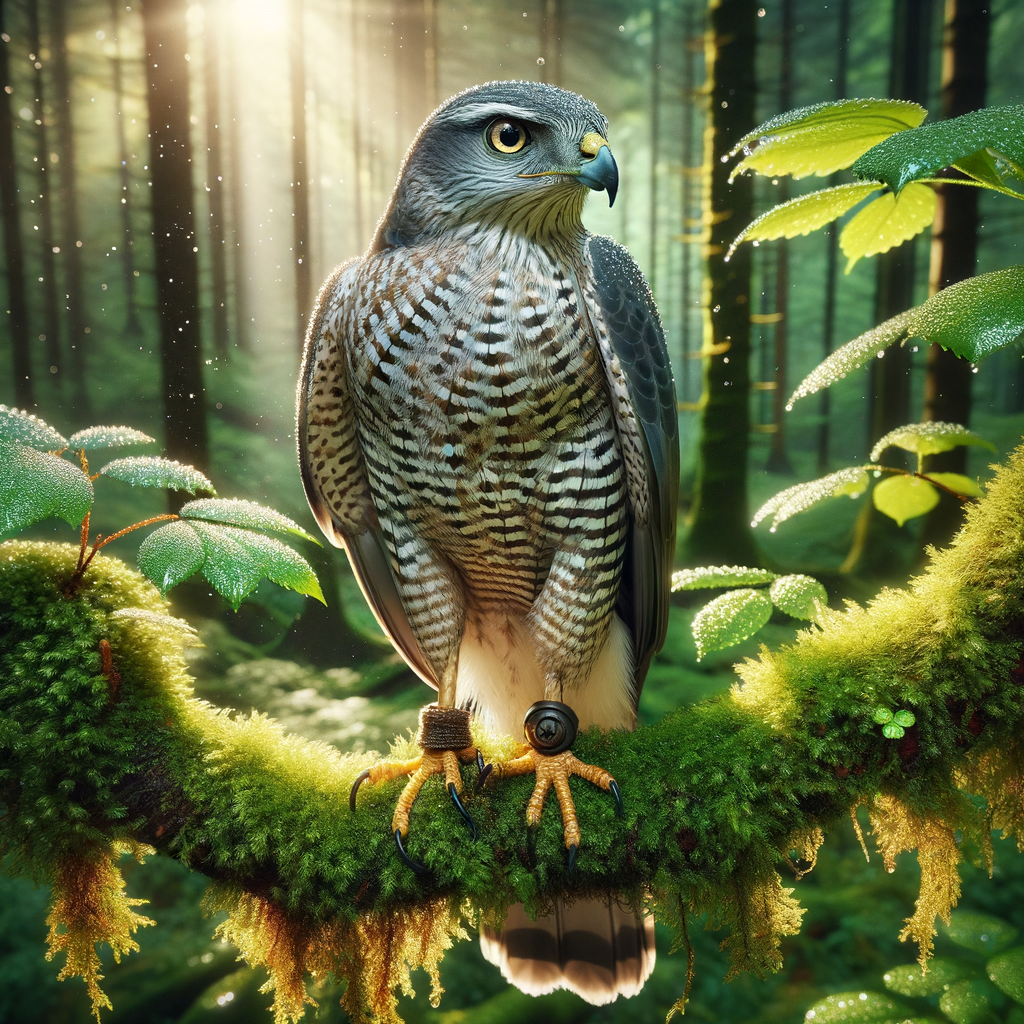Falconry’s Positive Role in Biodiversity
- Preserving Bird Populations: Falconry helps protect and conserve different types of birds, especially those that are endangered or threatened.
- Natural Pest Control: Falcons and other birds of prey used in falconry help control the population of pests, reducing the need for harmful pesticides.
- Promoting Awareness: Practicing falconry raises awareness about the importance of conserving birds and their habitats.
- Enhancing Ecosystems: By keeping the balance of predator and prey in check, falconry contributes to healthy ecosystems.
- Educational Opportunities: Falconry provides unique hands-on learning experiences about wildlife conservation and environmental responsibility.
- Cultural Heritage Preservation: Falconry is a tradition with deep historical roots and practicing it helps keep this cultural heritage alive.
- Ethical Hunting Practice: Falconry promotes sustainable and respectful ways of hunting that prioritize animal welfare.
Remember, preserving nature is a team effort, and falconry is a significant player in maintaining the balance in our environment. Join us at Learn Falconry to make a positive impact on biodiversity while enjoying this fascinating ancient practice!
Falconry and Its Impact on Biodiversity: An Irish Tale of Nature’s Balance
Have you ever listened to an old Irish tale and marveled at the delicate balance of nature woven into the story? Imagine a lush green meadow, where every creature, big or small, plays a role in keeping the harmony alive. Now, replace that meadow with our modern world and those creatures with the majestic birds of prey in falconry. Just like in the Irish folklore, falconry helps maintain a delicate balance in our environment.
So, why does this matter? Why should you keep reading? Because understanding how falconry impacts biodiversity can help us appreciate the profound connection between human activities and the environment. Plus, it’s more exciting than any old Irish tale! Join us on this journey to discover how these impressive hunters from the sky contribute to a healthier, more balanced ecosystem. Don’t miss out – the story gets even better from here!
The Impact of Falconry on Biodiversity and How It Promotes Conservation
Falconry, the ancient art of training birds of prey to hunt, has a fascinating relationship with biodiversity. Understanding how falconry impacts biodiversity and promotes its conservation can shed light on its significant role in maintaining ecological balance. Let’s delve deeper into this relationship and explore the various aspects of how falconry contributes to promoting biodiversity.
The Relationship Between Falconry and Biodiversity
Biodiversity refers to the variety of life in a particular habitat or ecosystem. It includes different species of plants, animals, fungi, and microorganisms, and the ecosystems they form. Falconry, through its practices and principles, directly influences biodiversity. By focusing on the conservation of raptors and other bird species, falconry helps to maintain balanced ecosystems.
Falconers often partake in breeding programs and reintroduction efforts to bolster bird populations, especially those that are endangered or at risk. These activities contribute positively to falconry biodiversity impact by ensuring the survival and growth of various species, thus enriching the biodiversity of the region.
Benefits of Falcons to Ecosystems
Falcons play a vital role in ecosystems by keeping the population of smaller animals in check. Their presence helps in controlling pests and maintaining a balance in the food chain. By promoting biodiversity through the natural activities of falcons, ecosystems remain healthier and more resilient.
For those interested in studying different species of falcons, Learn Falconry’s page on Species of Falcons provides detailed information about the various falcon species.
Conservation Efforts and Falconry
Falconry and conservation often go hand-in-hand. Many falconers are committed to the preservation of birds of prey and their habitats. Through initiatives like habitat restoration, controlled breeding programs, and careful monitoring, falconry promotes biodiversity by protecting both the birds and the environments they depend on.
The Falconry and Conservation section of our website dives deeper into the specific roles that falconers play in conservation efforts.
Legal Aspects of Falconry and Conservation
Understanding the legal aspects of falconry can further promote biodiversity by ensuring that falconry practices are carried out sustainably and ethically. Regulations and laws are in place to protect both the falcons and the biodiversity they impact. By following these legal requirements, falconers contribute to the broader goals of conservation.
For an in-depth look at the legal requirements, visit Legal Aspects of Falconry.
Training and Habitat Restoration
Training falcons to hunt requires a deep understanding of their natural behaviors and the habitats they thrive in. Ensuring these habitats are preserved or restored can significantly impact biodiversity. Falconers often engage in habitat restoration projects, fostering environments where not only falcons but various other species can flourish.
To learn more about training a falcon, click here: Training a Falcon.
Community and Collaboration
Promoting biodiversity through falconry often involves community and collaboration. Falconers don’t work in isolation; they often collaborate with conservationists, scientists, and local communities. By working together, these groups can share knowledge, resources, and strategies to foster a more biodiverse world.
Check out how community-based conservation is integral to falconry here: Falconry and Conservation.
Innovations and Modern Practices
Modern falconry isn’t just about tradition; it also involves innovative practices and technologies that promote biodiversity. Innovations in falconry gear and monitoring tools help falconers keep better track of their birds and ensure their health and well-being, contributing significantly to conservation efforts.
Explore modern falconry techniques and innovations here: Modern Falconry.
In conclusion, the impact of falconry on biodiversity is profound and multifaceted. From breeding programs and habitat restoration to community collaboration and modern practices, falconry truly plays a pivotal role in promoting and maintaining biodiversity. By continuing to support and understand these efforts, we can help ensure that this ancient practice benefits both birds of prey and the broader ecosystems they are part of.
The Impact of Falconry on Biodiversity
Falconry, the ancient art of training birds of prey, has a profound impact on biodiversity. It’s essential to understand these impacts to better manage and conserve bird populations globally.
Hybridization Risk
Introducing exotic raptor species into the wild can disrupt local bird populations. When birds from falconry breed with wild falcons, hybrids may be created, leading to weakened gene pools and negative impacts on biodiversity.
Conservation Efforts
Some regions use falconry to increase genetic diversity. For example, Azerbaijan releases falcons from falconry into the wild, aiming to boost local populations. However, these releases should be carefully managed. It’s vital to perform genetic tests to ensure the birds are not hybrids before releasing them.
Artificial Nesting Success
Falconry isn’t just a hobby—it can also be a tool for conservation. In Mongolia, artificial nesting projects have helped Saker falcon populations grow. By providing safe places for these birds to breed, conservationists can support their populations.
Wildlife Trade Concerns
The legal wildlife trade, especially in falconry, has resulted in a high number of hybrid birds being traded. This situation underscores the need for strict conservation measures to protect native raptor populations from being overwhelmed by hybrids.
Research Initiatives
Researchers from Abu Dhabi and Boise are studying the effects of climate change on falcon populations, focusing on species like the gyrfalcon near the polar ice caps. These studies help us understand how changing environments affect these magnificent birds.
Conservation Fund
Organizations like the Mohamed Bin Zayed Raptor Conservation Fund support research and conservation projects. These initiatives aim to understand and preserve falcon habitats and populations, ensuring that these birds thrive for generations to come.
Real-World Examples and Data
To visualize these points, consider the following table that highlights the various initiatives and their impacts:
| Initiative | Region | Impact |
|---|---|---|
| Hybridization Risk | Global | Disrupts native gene pools |
| Conservation Efforts | Azerbaijan | Potential genetic diversity; needs testing |
| Artificial Nesting | Mongolia | Population growth of Saker falcons |
| Wildlife Trade | Global | High proportion of hybrids in trade |
| Research Initiatives | Abu Dhabi, Boise | Studying climate impact on gyrfalcons |
| Conservation Fund | Global | Supports habitat and population research |
Understanding the relationship between falconry and biodiversity is crucial for the conservation of these birds. Let’s explore these aspects deeply to better appreciate and protect our feathered friends.
The Impact of Falconry on Biodiversity: Final Thoughts
Falconry has a significant impact on biodiversity, presenting both challenges and opportunities. One major concern is the risk of hybridization, where introducing exotic raptors into the wild can disrupt the gene pool of native species. Despite this risk, falconry also offers promising conservation avenues. For example, artificial nesting projects in Mongolia have successfully increased local raptor populations.
The trade of wildlife, including falcons, raises additional biodiversity issues, with a high proportion of hybrids among traded raptors. This underscores the need for strict conservation measures to protect native species. Efforts such as the Mohamed Bin Zayed Raptor Conservation Fund are vital, supporting important research on falcon habitats and population dynamics.
As we consider these elements, it is clear that responsible management, ongoing research, and comprehensive conservation strategies are crucial to maintaining the delicate balance between falconry and biodiversity. By focusing on sustainable practices and proactive measures, we can help ensure the long-term health and diversity of our natural world.



